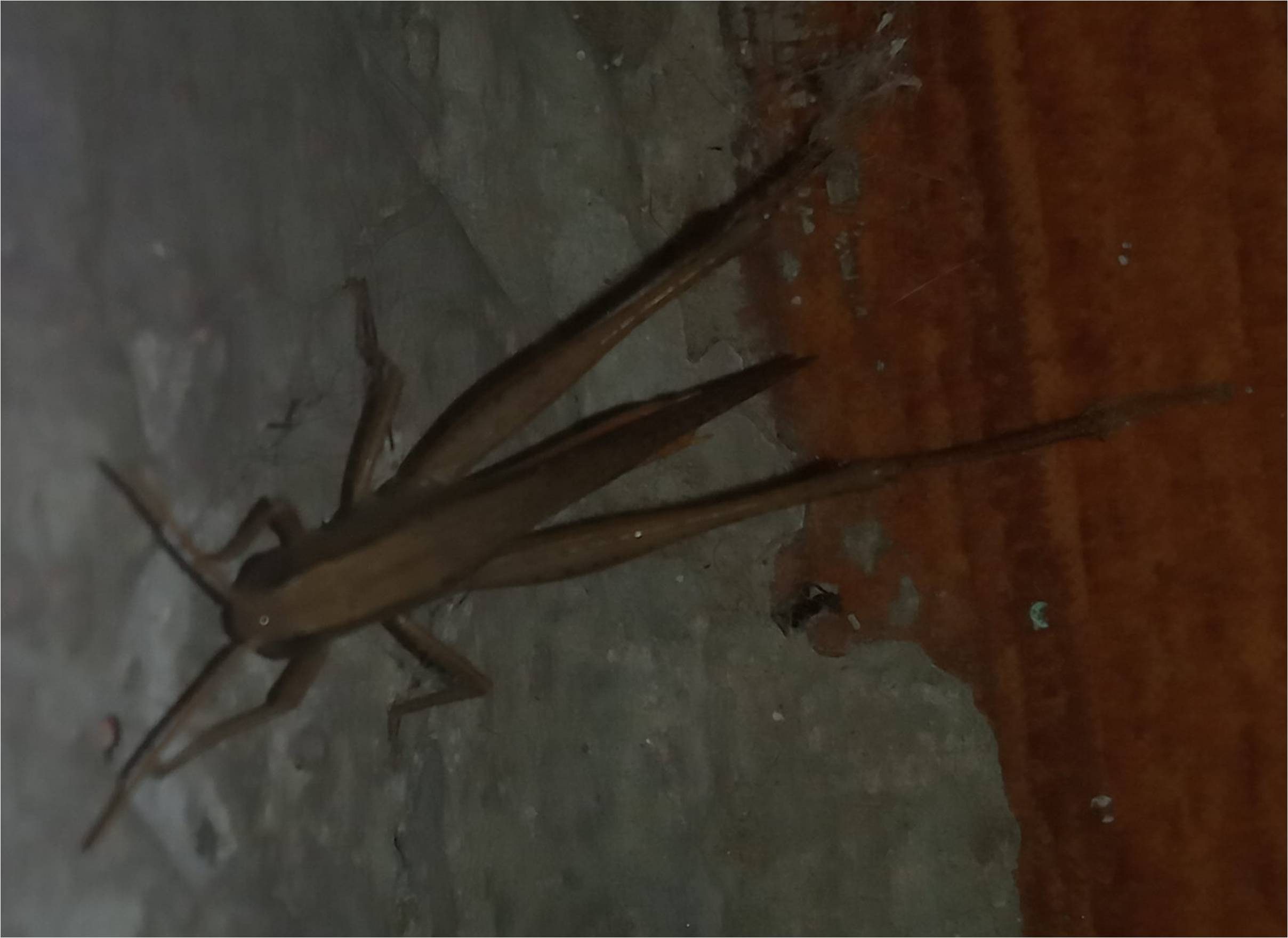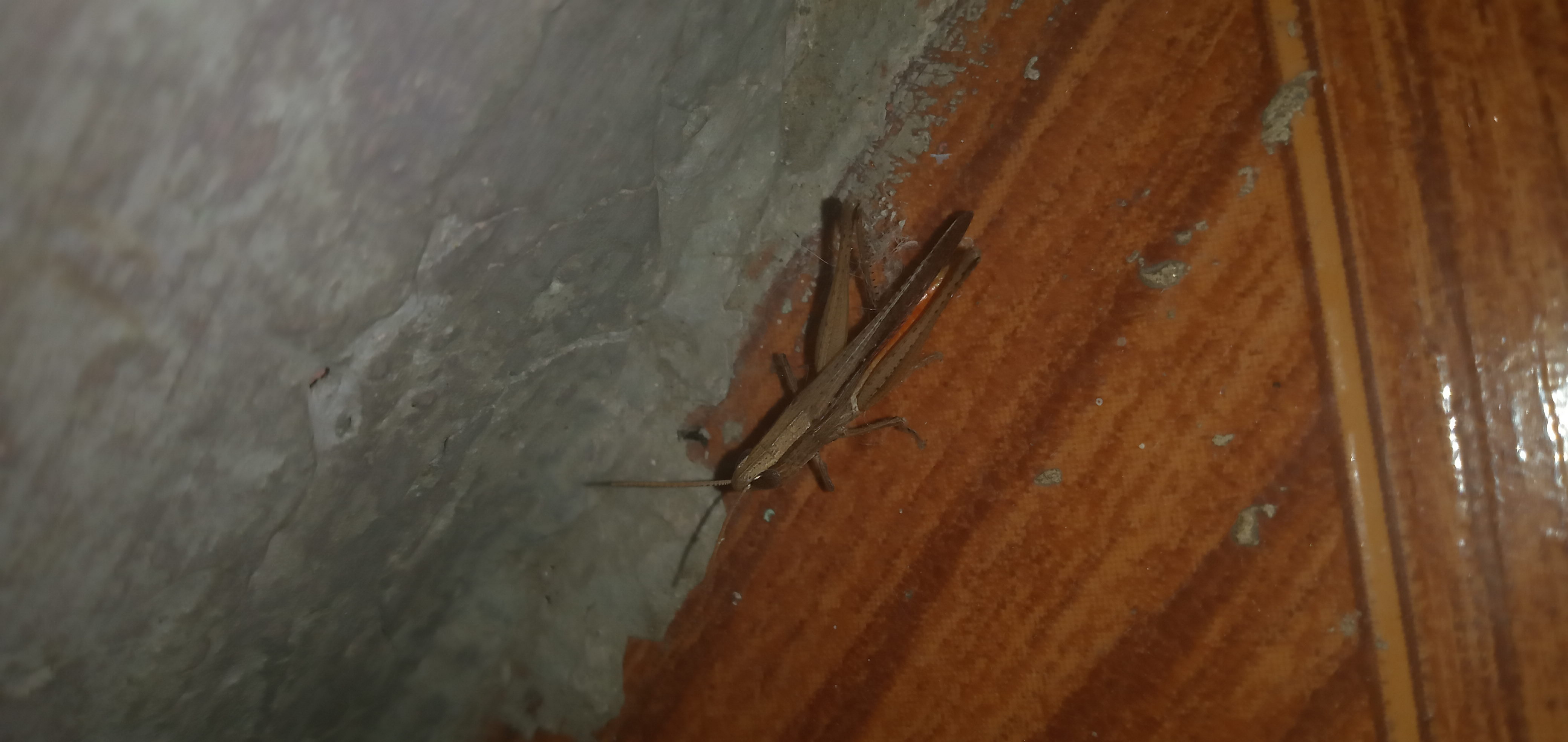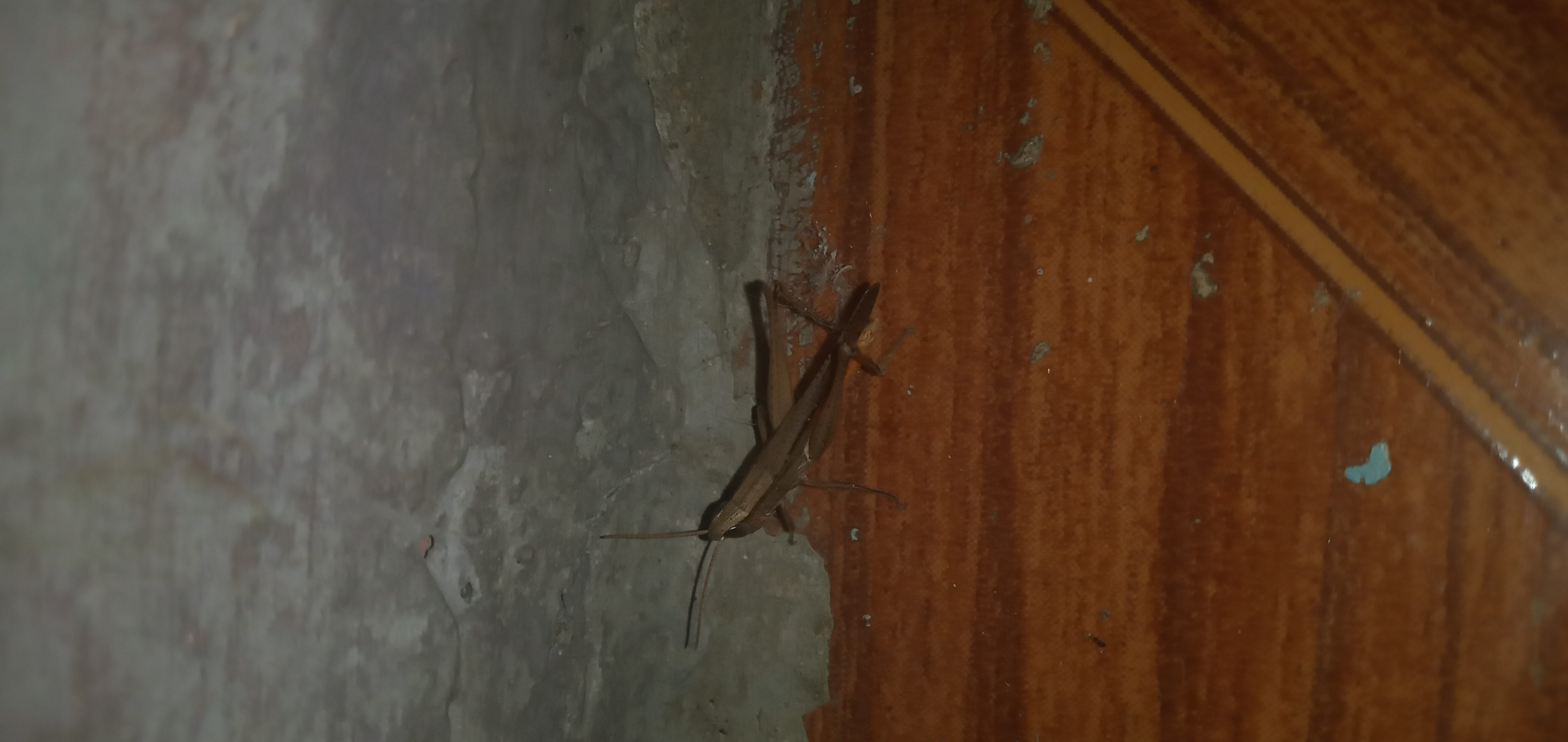hello friends of this new community of insect lovers, i am new in this world of insects, which are fascinating and all kinds. i found this grasshopper, in my house i investigated a little, i hope you will correct what kind it belongs to.

I have done some research and I see that they are usually elongated insects with thin, parchment-like wings. But there are also leafhoppers with long, membranous wings that are capable of flight. The mouthparts of the grasshopper are chewing. Their hind legs are large and adapted for jumping.

DESCRIPTION
Grasshoppers differ from crickets in having much shorter antennae and a slimmer body. As in all insects, their anatomy is divided into head, thorax and abdomen. The latter two are segmented and covered by a rigid chitin cuticle that protects the internal organs. It has 3 pairs of legs and 2 pairs of wings, of which the first are leathery and narrow, called tegmina.
It is curious that the legs end in structures similar to the claws of mammals, but they are very useful for holding on; likewise, its hind legs, which stand out from the front ones, are very strong and have a robust femur. The anterior face of the femur of the male has a row of small pegs, used for stridulating.
They have tympanic ears that are not on the head, but on the abdomen, and their structure is similar to that of the ears of some reptiles, birds and frogs, with a thin membrane that transmits sound vibrations. Their olfactory organs are located in the antennae. Its circulatory system is open and instead of blood it contains hemolymph, a fluid that fills its cavities.

DISTRIBUTION AND HABITAT
Grasshoppers are found almost everywhere in the world, but are most abundant in tropical regions. After these, temperate regions have the greatest number of species. A large proportion of grasshoppers prefer to live on the ground in open, dry, grassy habitats, but in general they can be found in lowland tropical forests, grasslands and semi-arid lands, just to mention a few. Species from the tropics are found in lichens and mosses as well as in tree canopies.
FEEDING
These insects are almost exclusively herbivorous; yes, their diet is based on grasses which they consume regularly during the day. They supplement their diet with pollen and nectar, and some are omnivores, as they do not disdain smaller insects and invertebrates. They have been known to consume animal feces.

Congratulations @goliat11! You have completed the following achievement on the Hive blockchain and have been rewarded with new badge(s) :
Your next target is to reach 20 posts.
Your next target is to reach 50 comments.
You can view your badges on your board and compare yourself to others in the Ranking
If you no longer want to receive notifications, reply to this comment with the word
STOPCheck out the last post from @hivebuzz:
Support the HiveBuzz project. Vote for our proposal!